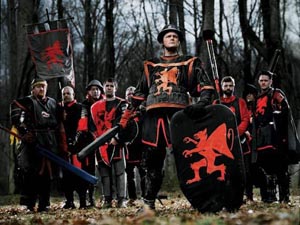So here comes a confession: I am an avid, happy as a clam LARPer. That’s Live-Action Roleplay for those who don’t know the term. Lots of folks don’t understand it, even other geeks. Yet every weekend, gamers across the country put on their best costumes and embark on storytelling adventures with their friends and fellow players in games that span a dozen genres. From the theater style games like White Wolf’s long-standing Camarilla Club games, to the all-out lightest touch combat (or boffer) games most often seen in the media, there’s a lot of variety in LARP out there. Still, I’m often boggled at how badly LARP is perceived by people. After considering reasons why that might be, I came come up with one decent reason. When you take a look at how LARP has been portrayed in the media, the offerings are, sadly, pretty horrifying.
Movies and television representation about LARP have all been almost cringe-worthy nightmares, especially for anyone who is part of the hobby. While the films themselves might have decent storytelling, production and cinematography, they all seem to misrepresent or badly frame the medium. At best, they seem unable to fully explain how LARPs are structured and what draws adults to the games, which leaves the audience with no context to understand what they’re looking at. At worst, they misrepresent LARP as a hobby full of odd, escapist people with poor social graces and a difficulty telling the difference between fantasy and reality.
Overall to my view, the representations of LARP in film and television fall into three categories. There are the documentaries that attempt (and arguably fail) at presenting unbiased reality. There are the fictional accounts that use LARP as the backdrop for their stories to varying degrees of success. And there’s the most difficult offenders, the comedies, that use LARP as part of their punchline. I’ll break down the best and the worst, vetted by a veteran LARPer.
The Documentaries: Monster Camp and Darkon
You’d think in a medium that was created to offer audiences a slice of reality on film, documentaries would offer LARP its best shot at being presented properly. Yet as anyone who’s watched documentary films can attest, the trouble with accurately representing reality is the bias that often leaks in. Documentary filmmakers get the opportunity to frame the story they want to tell through editing and careful crafting of the narrative, which can leave the audience with a delicately guided context for what they’re seeing. In the case of two major documentary films on LARP, that’s just what the filmmakers did.
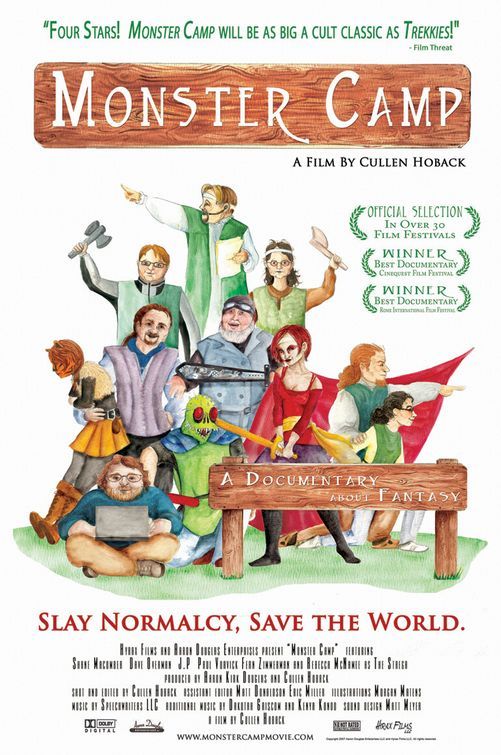
Monster Camp is a 2007 film by director Cullen Hoback that won several film festival awards the year it debuted. Filmmakers enter the world of NERO Seattle to get a glimpse into how players and staff build their high-fantasy world. For a while, the film seems benign enough. Right off the bat, Monster Camp does a decent job in setting the context for how a game is run and what kind of work goes into the running of the game. They certainly focus on the dedication of those involved in the game and in the joy it seems to bring its players. Yet over time, the film centers on examples of players who invest a great deal of themselves in the game and slants the film to make them seem out of touch with reality. “I tend to think about NERO more than I think about my normal life,” one player is recorded as saying in the opening of the film, and that’s the theme the film keeps harping on. This kind of focus is one of the worst stereotypes of LARPers and Monster Camp does little to get away from it. In the end, the players come off as absurd and there’s not enough context to explain why the game itself is creative and fulfilling other than as a distraction from normal life.
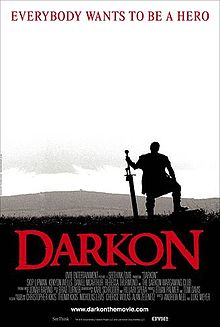
Better in its execution is 2006’s Darkon, directed by Luke Meyer and Andrew Neel. This film follows the Darkon Wargaming group in Baltimore, Maryland during a time when two of its in-game factions are on the verge of a battle. The story follows two of the men whose characters are headlining this in-game conflict, examining how their in-character and out-of-character lives are affected by the investments they’re putting into the war. Darkon takes the time to better explain the in-character dynamics of the Darkon world so the audience has a clearer understanding of the richly written fantasy story these players are exploring. They also take the time to let the subjects of the film’s focus—the players—express eloquently why they do what they do. While Darkon is the less objectionable of the two documentaries (and perhaps the least objectionable of nearly all the examples of LARP in film) there is still a degree of geek shaming that goes on, as there are numerous moments of focusing on the socially awkward geek and his focus on game over real life.
The documentaries, however, are far and away better than the examples found in fiction.
The Fiction: Degrassi and The Wild Hunt
In fiction, a filmmaker gets a chance to cast their subject in whatever light they want. So one would think that, given the chance, LARP might get a better shot in a fictional television or film setting. One would think… but where the documentaries chose to focus on the awkwardness and escapism of LARPers, the examples of ‘drama’ fiction tend to slant LARP as downright socially objectionable or outright dangerous.
Canadian teen soap Degrassi has covered a lot of issues over the years—you name it, they’ve done a ‘very special episode’ about it. So when they wanted to find a way to give shy girl Anya a hobby that would help her feel more empowered, the writers created a teacher named Mrs. Dawes who introduced Anya to a fantasy game out in the woods where she can play a princess. The episode makes a point of showing this empowerment, as Anya gets the opportunity to stretch her creative muscles as Princess Carilla of Dreadamort, making it one of the best examples of fictional LARP accounts around.
But within the same breath, the episode centers around Anya having to hide her LARPing from her boyfriend Sav, who doesn’t understand why she hangs out with those ‘freaks’ and ‘weirdos’. The conflict resolves when Anya puts her foot down about being a LARPer and her boyfriend relents for no apparent reason, showing up at one of her games. This episode does nothing to explain why Sav should even think that LARP is for ‘freaks’ and ‘weirdos’—it just presents to the audience the attitude that, to most people, LARPing should be considered that way without question. Of course, the episode postulates, this is something nerdy that should be made fun of and then overcome and put up with by the understanding boyfriend. Here is your happy, high school message ending — tolerance for the nerd-folk in an anti-bullying world.
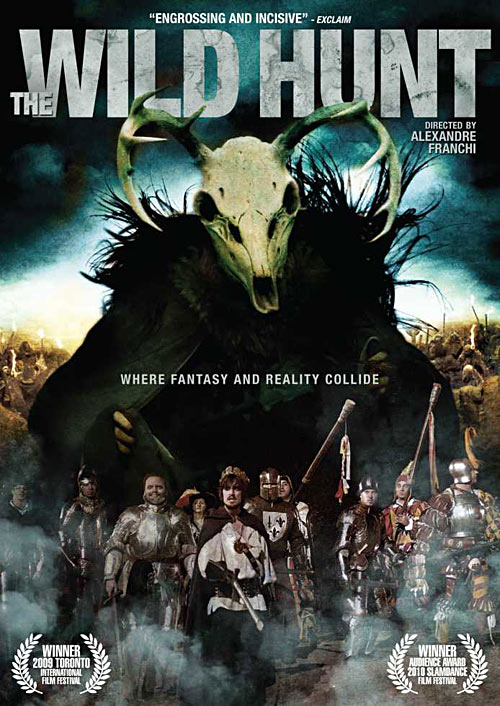
Yet for all its problems, the Degrassi episode looks like a shining example of LARP boostership compared to the Canadian drama/horror film, The Wild Hunt. Debuting in 2009 from director Alexandre Franchi, The Wild Hunt follows brothers Erik and Bjorn Magnusson as Erik is forced to pursue his girlfriend Evelyn up to Bjorn’s LARP weekend event to try to win her back to their failing relationship. While there, Evelyn is ‘captured’ in character by a wizard and his bloodthirsty tribe, a problem compounded by the fact that the wizard’s player is into Evelyn and gets his feelings confused in and out of character.
Soon enough, the out of character tensions make all the players forget that things are only a game and the fighting becomes real. For it’s beautiful cinematography and well-crafted storytelling, The Wild Hunt as a LARP film is a nightmare. It represents LARP as a hobby full of reality-challenged, latently violent people just looking for an excuse to go on a murderous, rape-filled rampage. And when the film isn’t representing LARP as a place where you might get murdered by folks who can’t tell the difference between Real Life and Make Believe, it presents them again as an absurd bunch of folks running away from their problems, an opinion spouted by the main character Erik about his brother. It also presents LARP as a place where women could be victimized at any moment by men out on a full out Pillage-Fest, a public relations nightmare for a game medium that is notoriously (and wrongly) known for being male dominated and less than female friendly. This film is so patently exploitative in its representation of the gaming genre as to be almost offensive.
The Comedy: Role Models and Xercon and Wulfsbane
Drama hasn’t done so well when it comes to dealing with LARP, so how does comedy fair in representing the medium? Surprisingly, one of the best examples of LARP in fiction comes from a comedy—still, when dealing with the medium in comedy there are hits and there are misses and in the end, and it comes down to the tone of the piece. If LARP is just a part of the already comedic backdrop, that’s one thing. But if the piece is all about making fun of LARPers and their nerd-dom, then that’s something else.
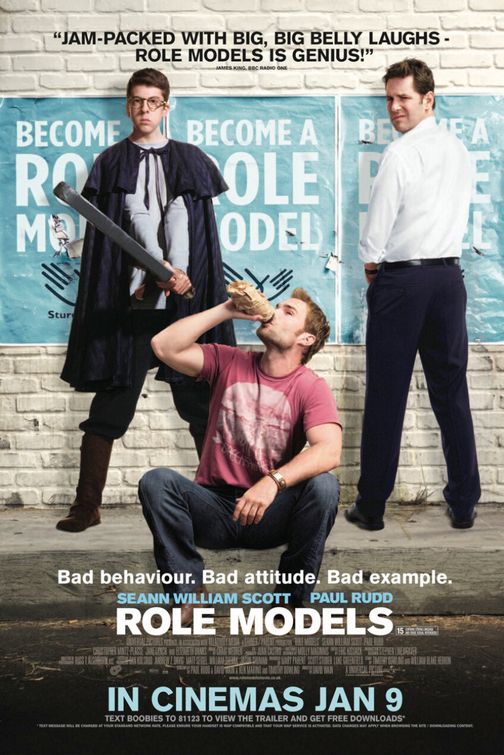
Take for example the 2008 comedy of Role Models, directed by David Wain and starring Seann William Scott and Paul Rudd. Role Models is overall a funny film about two mess-ups who end up having to mentor two younger kids as part of their probation, or else they’ll end up in jail. Paul Rudd’s character is saddled with Augie, a kid who loves LARP and is struggling for acceptance with his fellow gamers and his parents. While the film is not all about the LARP, there’s a heart-felt quality to Augie’s struggle to enjoy what he loves without being bullied. When Rudd finally stops being a jerk in the film and starts to stand up for his LARPing protege, there is even a heartwarming scene where he confronts the boy’s parents regarding how they give Augie grief for his gaming. The film goes out of its way to try and present LARP as something that even non-gamers like Rudd and Scott can get into if their arms are twisted.
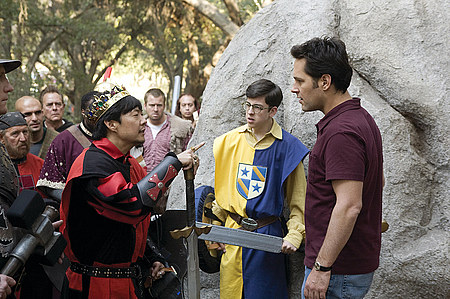
Underneath it all, though, is the same old stereotype: LARP is weird and the people who play it are oddballs. The scenes with Ken Jeong’s character going to a burger joint as his character and speaking in character all the time are particularly painful—there’s that old ‘some gamers just can’t separate reality from fantasy’ thing again that films love to play with. Yet against the backdrop of a comedy, the sting of these pokes at LARP seem a little less judgmental, since the film is poking fun at a lot of things. That’s the joy of a comedy, and makes Role Models actually one of the better representations of LARP on film around.
Coming in on the other side of good taste in comedy is the web series Xercon and Wulfsbane. Created by Per Frame Productions, it follows the adventures of two hopeless LARPers who are so mortifying in their over-focus on the game that they are the butt of jokes even within their own community. The two characters are meant to represent the worst that gamers have to offer—overly invested in their characters, unable to take time out for real life events beyond gaming and even worse, bad at their own hobby.
The main characters are tragically painful to watch, and where Role Models has heart about the good points of gaming, this series seems predicated upon picking on LARP because it’s an easy hobby to make fun of. The other problem comes from the series’ misrepresentation of LARP—it’s clear that the writers have had little experience with the game and instead take aim at it for the ease of turning it into a farce, more than anything else. Still, some might say, isn’t that what comedy is about? The creation of farce? The trouble in that argument is that in this case, it is poorly constructed farce that relies upon high school shaming humor. In the era of geek chic, one would expect better from people trying to make a webseries that calls to geekery.
A happy medium that deserves honorable mention here is the episode of the CW’s Supernatural in which Sam and Dean Winchester find out that their lives have been novelized and there are folks LARPing in a hotel as them. For a completely tongue-in-cheek episode that uses LARP as a backdrop, the show still pokes fun at LARPers, but no more than it really pokes fun at everything else—including itself.
The Round Up: Hollywood Doesn’t Get It
After digging through what Hollywood, independent filmmaking and the internet had to offer, I came up with one conclusion—filmmakers don’t seem to understand LARP, nor do they care to. Even those filmmakers who went out to document a non-fiction account of a game and its players still seemed to go out of their way to present the most awkward moments for those gamers on film. Where they highlight moments of triumph and creative expression, they constantly juxtapose those uplifting parts with the stereotypical examples of ‘the kid who can’t get a date’ and ‘the guy who is too involved in game.’ And while those stereotypes are based to some extent upon realities that can exist, it seems as though each filmmaker purposefully chooses to highlight the social flaws of the individual gamers themselves, rather than celebrate the medium. There’s a thin line between laughing at in-jokes about something and just plain laughing at someone, and sadly, this is a line plenty of representations of gaming, and LARP in particular, cross with regularity.
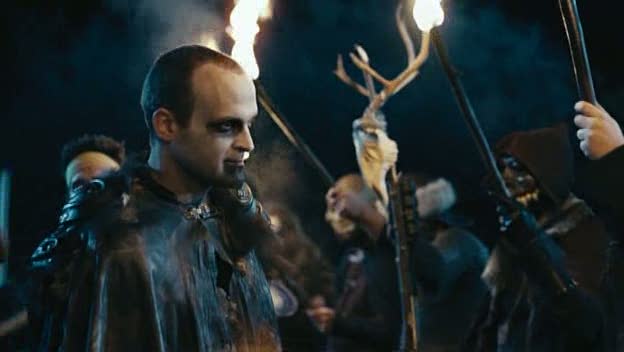
Or, they just make LARPers all look like that guy. Take your pick.
Happily, there seems like there might be hope on the horizon. A new reality show called World of LARP has been put together, chronicling the adventures of a group of gamers and their characters. Will this show give LARP the even hand that it deserves? Having previewed the first episode, I can say that not only does it do its job of exploring the medium, but it has none of the poking fun elements that many of my previous examples did. What will come of the show? We’ll just have to wait to find out.
Any good examples out there that I’ve missed? Sound off, LARPers and non-LARPers alike, if you know of any!
Shoshana Kessock is a comics fan, photographer, game developer, LARPer and all around geek girl. She’s the creator of Phoenix Outlaw Productions and ReImaginedReality.com










